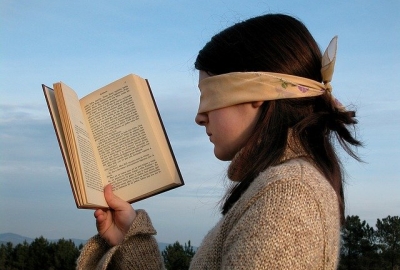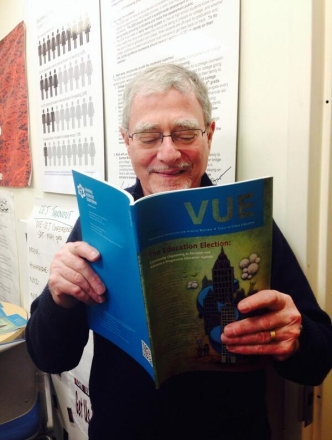
By Norm Fruchter
In a recent Chalkbeat article, Alex Zimmerman reports that some 1,400 NYC Department of Education reading specialists may be assigned to other classes as the city school system responds to the COVID challenge. Some 450 Universal Literacy coaches who support classroom teachers, as well as 960 master teachers who lead small-group literacy instruction for students with disabilities, may be redeployed to teach both virtual and in-person classes. This potential reassignment threatens the literacy progress of thousands of struggling readers.
I’ve experienced how skilled reading intervention can change the lives of struggling readers. During the 1970s, I worked in a high school for dropouts in Newark, NJ. I taught, among other subjects, a Literature class that focused on poetry to approximately 15 students in three two-hour sessions each week. I started most classes by putting a short poem on the blackboard and asking the class to read it silently. Then I read the poem aloud and asked individual students to unpack the meaning of successive lines of the poem. Next the class discussed the poem as a whole and, in the final half-hour, I asked students to write whatever thoughts, feelings and associations the poem triggered for them. I collected students’ written responses in individual portfolios that I reviewed and discussed with them weekly.
I was puzzled by an odd pattern of engagement by a new student, who I will call James. He was perceptive in line-by-line analysis, and adept at construing the larger landscape of the poems under consideration. But instead of spending the class’s final half-hour writing, James disappeared -- to the lounge, the library, one of the school’s shops, even to the park a few blocks from the school. He always promised to produce his thoughts by the next day, and consistently delivered, so his portfolio was as replete with written work as the portfolios of my most prolific students. But I never saw him write anything in class.
I’m not certain what triggered James’s revelation. I think I asked him to fill out an application to the College Board because the school staff had decided that our potential graduates should take the SATs. His instant, startled refusal may have prompted me to ask, mostly in jest: “C’mon, James! You know how to write!”
He flashed his broad, disarming grin. “Actually I don’t,” he said. “And I can’t read, either.”
I was stunned. He’d dropped out halfway through the tenth grade of the neighborhood high school, and his transcript showed mostly Bs and Cs in his major subjects, with an occasional A in math. His portfolio entries were lively, wide-ranging responses to the poems we focused on. I wondered about the clues I’d missed in the four months James had spent at our school, and we started a dialogue as I tried to understand how he’d maintained the illusion of literacy for so long. I learned that James and his family had emigrated from Eastern Europe in the late fifties, and James had mistakenly been placed in a regular English language class and had somehow adapted. “I was always a quick learner,” he told me. “And my older sister had mastered English in Europe so she did my homework for me. I got away with it for years, till she got a job in Manhattan and couldn’t help me anymore. I dropped out a few months later.”
“But what about all the written work you hand in? Your class portfolio is filled with good writing!”
“I dictate my portfolio pieces to my little sister,” James explained. “That’s why the handwriting looks a bit childish.”
I’d thought, obviously mistakenly, that James’s handwriting seemed stilted, formal, European. “But how do you participate in the class discussions?” I asked. “You always volunteer for the line-by-line readings and analyses of the poems.”
“You read the entire poem out loud at the beginning of class,” James answered. “I memorize the poem as you read it. And I volunteer for the line-by-line analysis because I like doing it. I can usually get the first three or four lines of a poem word-for-word in my head.”
As the year continued and James described more of his ingenious adaptations for negotiating his schooling and his daily life, I marveled at the creativity he mobilized to compensate for his inability to read and write. Given James’ revelation, our teaching staff administered a schoolwide reading assessment to gauge how many other students might be shielding similar handicaps. We came up with a shortlist of four non-readers and five struggling readers and interviewed them about their reading capacities. Our school had developed enough trust so that our students were willing to discuss their difficulties without significant hesitation.
Through friends who taught reading, I was referred to a reading specialist who used the Gattegno Silent Way literacy system, which recomposed English into ensembles of sounds, using Cuisenaire rods and wall-posters covered with manifold combinations of vowel and consonant pairings and clusters. The specialist agreed to teach our small class of struggling readers, and covered our blackboards with Silent Way wall-posters. She commanded the room with a long rubber-tipped pointer, wordlessly conducting each student’s recitation across the universe of charts. Progress was amazing; by the end of the school year almost every struggling reader had reached at least a sixth grade reading level and some had gone far beyond. Only one student had given up and dropped out of both the Gattegno class and the school.
My memory, uncertain because I left the school a few years after the class for struggling readers started, was that the number of non-readers declined each year as we enrolled new cohorts of students. I know that our specialist eventually left the school for a professorship at a CUNY college. And I know that James graduated from our high school and earned an Associate Degree from the local community college. We were all quite proud of his achievements.
From the 1980’s on, as the press of standardized testing moved schooling assessment away from teacher judgment, the reading field focused on how to identify struggling readers and help them build their literacy skills. The development of early childhood assessment systems combining reading inventories, diagnostic reading portfolios, running records and other processes that focused on individual students’ reading capacity pushed the work along. Community school districts across New York City combined those diagnostic tools with interventions such as Reading Recovery to support one-on-one coaching that paired reading specialists with hesitant readers. Programs such as the Orton-Gillingham method, originally for students struggling with dyslexia, expanded to broader categories of students with disabilities to increase the capacity of hesitant readers. Literacy coaches trained to develop and deploy individualized assessment and intervention strategies were increasing assigned to support classroom teachers, especially in the early grades.
These intensifying efforts suggest that James’ experience of illiteracy may become a rarity in school districts across the country. Yet, according to Zimmerman’s article, only 16% of NYC’s students with disabilities in grades 3-8 are proficient readers, compared to 56% of general education students. It’s likely that most of the 84% of NYC’s students with disabilities who are less than proficient readers are overwhelmingly Black and Latinx, far too many of them from families struggling against the privations of low-wage jobs, inadequate housing, and challenging health conditions. Because I’ve never forgotten my incredulity, and dismay, at discovering that James was illiterate, I wonder how many NYC students are currently deploying similar strategies to deflect the discovery that they cannot read.


